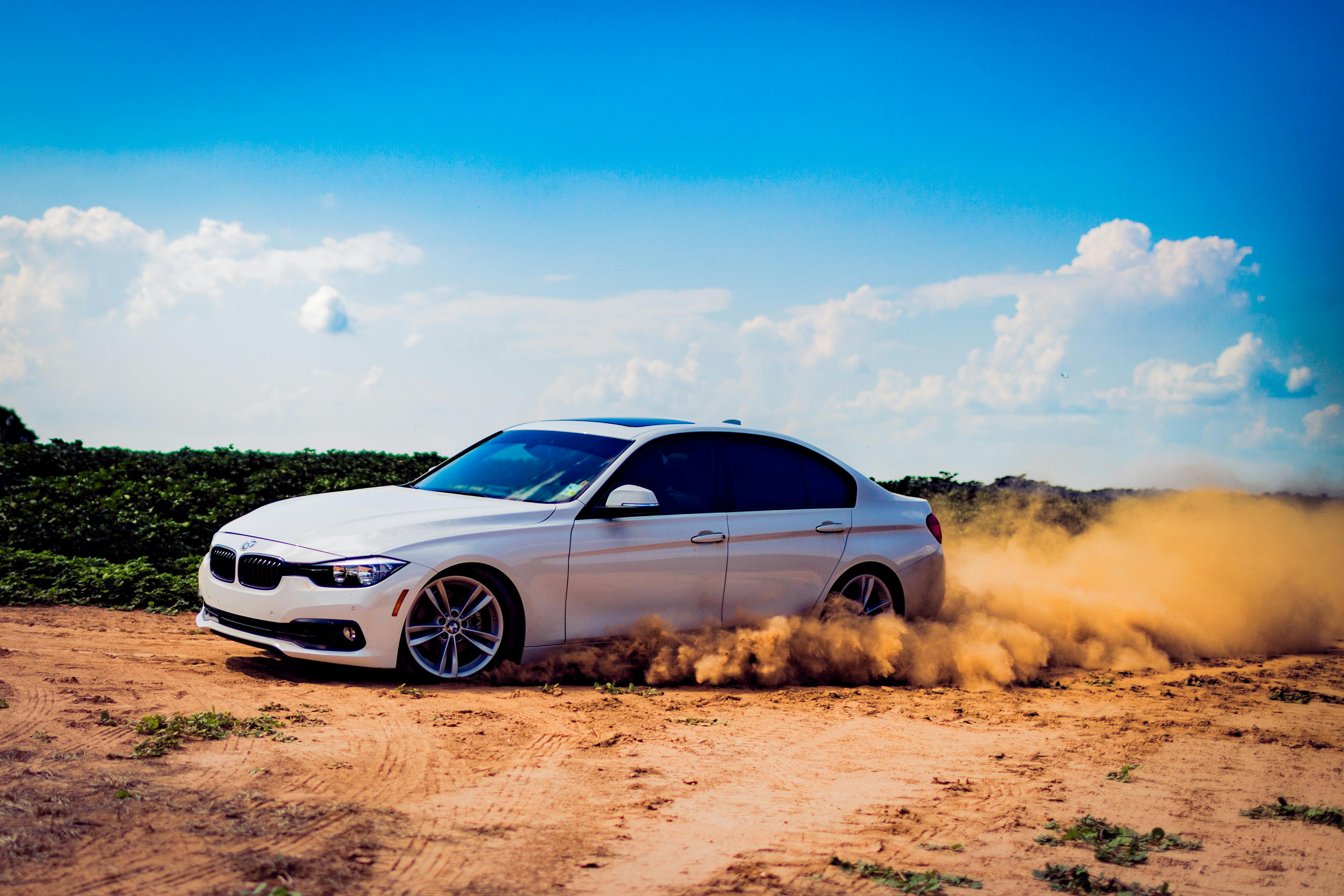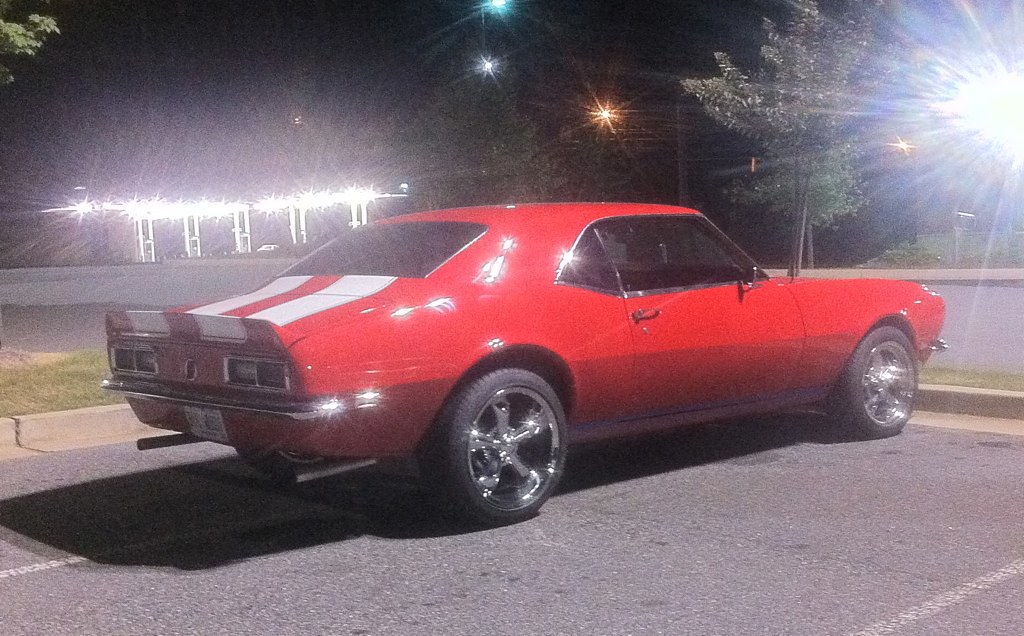The 1960s and 1970s ushered in a spectacular era for automobiles, a time when open roads beckoned with irresistible allure and the thrill of the wind in your hair defined freedom. Convertibles, those magnificent machines whose tops magically disappeared to reveal the vast sky, were far more than simple vehicles; they were powerful statements of style, adventure, and an infectious zest for life, perfectly embodying the spirit of a vibrant generation.
It’s truly no wonder these spectacular drop-tops became instant stars on the silver screen, gracing iconic films alongside Hollywood’s biggest names and creating some of cinema’s most enduring images. From dramatic escapes to sun-drenched cruises, convertibles offered filmmakers an unparalleled canvas for compelling storytelling. They allowed audiences to connect intimately with characters, transforming ordinary journeys into epic, memorable adventures.
For enthusiasts, these cars remain true time machines, making anyone behind the wheel feel like a bona fide movie star, a protagonist in their own unfolding narrative. So, let’s fasten our seatbelts, take a deep breath, and embark on a thrilling journey through a selection of 14 iconic convertibles from the ’60s and ’70s that are forever etched into our collective consciousness, starting with some unforgettable big-screen legends.
1. **1966 Alfa Romeo Duetto Spider**The 1967 film “The Graduate” isn’t just a classic for its narrative; it’s indelibly linked with its automotive star, the stunning 1966 Alfa Romeo Duetto Spider. This sleek Italian convertible, a graduation gift to Dustin Hoffman’s Benjamin Braddock, became inseparable from his romantic entanglements and desperate escapes. Its potent presence felt like a silent, stylish accomplice to Ben’s affair with Mrs. Robinson.
The choice of an Alfa Romeo was deliberate. Director Mike Nichols’ uncle reportedly imported them, lending authentic flair. With its distinctive boat-tail rear and Pininfarina design, the Duetto exuded European sophistication, a refreshing contrast to American muscle. Priced at $4,000 for its era, it symbolized aspirational cool, prioritizing nimble handling and pure driving feel over brute power. Its 1.6-liter inline-four engine, with a five-speed manual, was about the joy of the open road.
The car’s strong association with “The Graduate” led Alfa Romeo to acknowledge it directly. In 1985, they introduced the “Spider Graduate,” a bare-bones model continuing through 1990. This special edition cemented how deeply Benjamin Braddock’s iconic ride was embedded in popular culture and automotive history. Owning a Duetto Spider today is like holding a piece of cinematic history, offering a sophisticated and timeless driving experience.
Car Model Information: 2023 Mazda Mazda3 FWD w/Select Package
Name: Alfa Romeo Spider
Caption: Alfa Romeo Spider Series 2 (“Coda Tronca”)
Aka: Alfa Romeo “Duetto”
Manufacturer: Alfa Romeo
Assembly: Grugliasco,Turin
Production: 1966–1993
ModelYears: 1966–1994
Class: Sports car
Layout: Front-engine, rear-wheel-drive layout
BodyStyle: Roadster (automobile)
Related: Alfa Romeo Giulia,Alfa Romeo 105/115 Series Coupés
Designer: Aldo Brovarone
Predecessor: Alfa Romeo Giulietta (750/101)
Successor: Alfa Romeo GTV & Spider
Sp: uk
Categories: 1970s cars, 1980s cars, 1990s cars, Alfa Romeo vehicles, All articles needing additional references
Summary: The Alfa Romeo Spider (105/115 series) is a two-seater, front-engined, rear-drive roadster manufactured and marketed by Alfa Romeo from 1966 to 1994 in four distinct generations, or “series”, each with modifications ranging from modest to extensive.
As successor to the Giulia Spider, the Spider remained in production for almost three decades. The first three series were assembled by Pininfarina in Grugliasco and the fourth series in San Giorgio Canavese. The last Spider of that series was manufactured in April 1993—the last rear-wheel drive Alfa Romeo before the Alfa Romeo 8C Competizione of 2007.
In 2012, FCA Italy and Mazda studied the possibility of jointly developing a new Spider for 2015 based on the Mazda MX-5 platform. Ultimately, FCA and Mazda chose to manufacture a modern interpretation of the Fiat 124 Sport Spider rather than reviving the Alfa Romeo Spider.
Get more information about: Alfa Romeo Spider
Buying a high-performing used car >>>
Brand: Alfa Romeo Model: Duetto Spider
Price: $17,921 Mileage: 57,854 mi.
Read more about: Unveiling Automotive Royalty: The Definitive Ranking of 14 Coolest Roadsters by Auction Price for the Ultimate Enthusiast
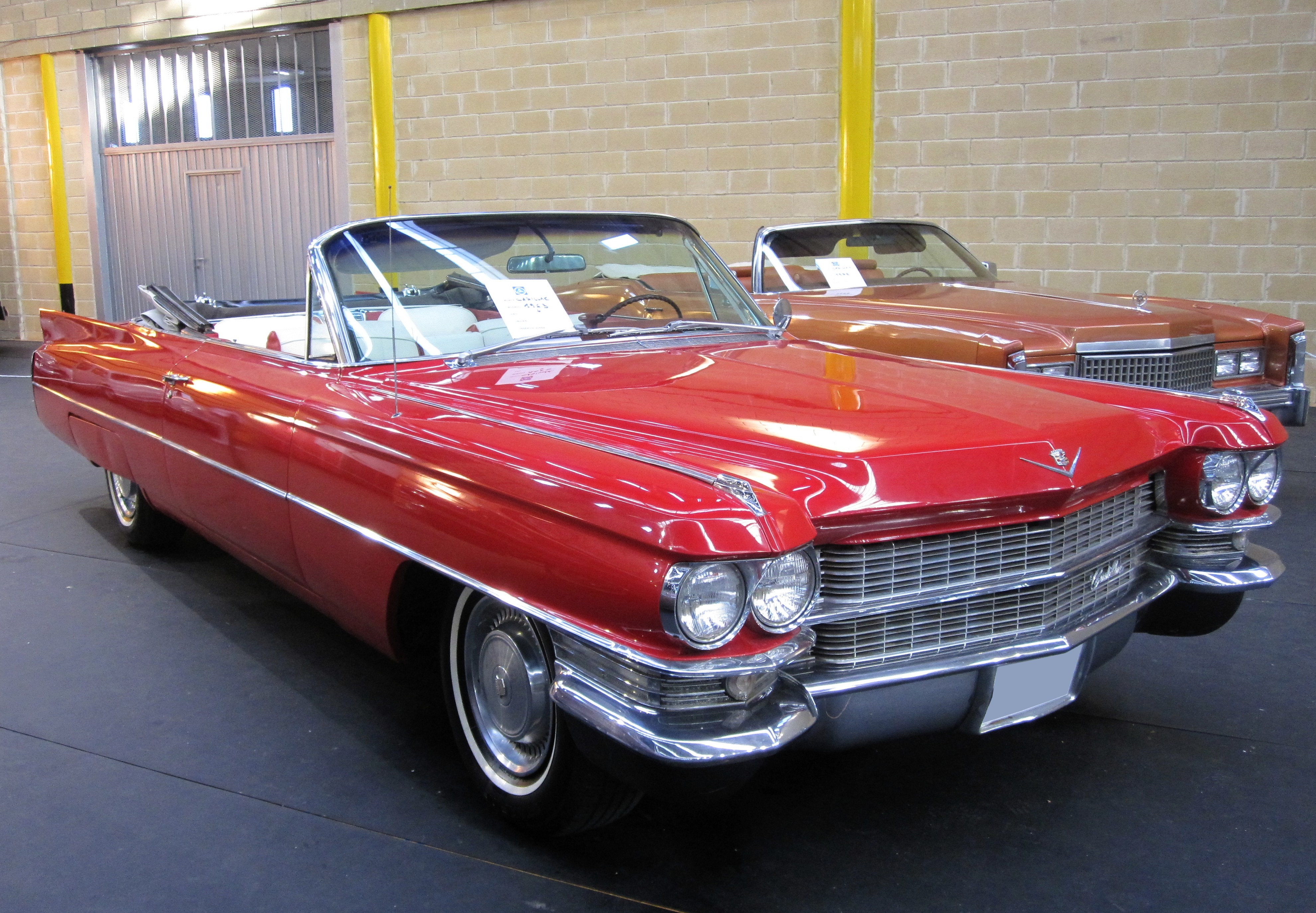
2. **1963 Cadillac Series 62 convertible**If any car embodied the audacious excess of a rising drug kingpin, it was Tony Montana’s vibrant yellow 1963 Cadillac Series 62 convertible in Brian DePalma’s “Scarface.” Al Pacino’s unforgettable Tony, a Cuban immigrant building a ruthless empire in Miami, found its ideal automotive reflection in this flamboyant drop-top. Adorned with tiger-print upholstery, it was a rolling declaration of wealth, despite Elvira Hancock’s famous quip that it “looks like somebody’s nightmare.”
The South Florida setting of “Scarface” was an ideal backdrop for convertibles. The ’63 Caddy, however, undeniably stood out among the film’s other drop-tops. Its magnetism wasn’t just its striking yellow or controversial interior; it was its sheer presence. This car was a leviathan, stretching over 18 and a half feet long with a 129.5-inch wheelbase, making it an imposing figure on any road.
Today, this specific piece of cinematic history is owned by former NBA star Shaquille O’Neal. That a legend like Shaq, known for his towering stature, now commands Tony Montana’s Cadillac only adds to its mystique. It remains a potent symbol of ambition, excess, and a darker American dream, making anyone driving it feel like the undisputed king of their domain, if only for a fleeting moment.
Car Model Information: 2023 Mazda Mazda3 FWD w/Select Package
Caption: 1963 Cadillac Series Sixty-Two Convertible
Name: Cadillac Series 62
Manufacturer: Cadillac
Production: 1940–1942,1946–1964
Predecessor: Cadillac Series 61,Cadillac Series 65
Layout: Front-engine, rear-wheel-drive layout
Assembly: Detroit Assembly,Detroit, Michigan
Successor: Cadillac Calais,Cadillac de Ville series#Third generation (1965–1970)
Class: Full-size,Luxury vehicle#High-end luxury.2Ffull-size luxury cars
Categories: 1950s cars, 1960s cars, Articles with short description, Cadillac vehicles, Cars discontinued in 1964
Summary: The Cadillac Series 40-62 is a series of cars which was produced by Cadillac from 1940 through 1964. Originally designed to complement the entry level Series 61, it became the Cadillac Series 6200 in 1959, and remained that until it was renamed to Cadillac Calais for the 1965 model year. The Series 62 was also marketed as the Sixty-Two and the Series Sixty-Two. The Series 62 was used to introduce the Cadillac Coupe de Ville and the Cadillac Eldorado which started out as special appearance packages that were later placed into production.
Get more information about: Cadillac Series 62
Buying a high-performing used car >>>
Brand: Cadillac Model: Series 62
Price: $17,921 Mileage: 57,854 mi.
Read more about: Regret in Every Journey: 12 Vehicles Owners Admit They’d “Unopt For” If Given the Chance

3. **1964 Chevy Malibu**Quentin Tarantino’s “Pulp Fiction” is steeped in lore, but few tales are as wild as that of the 1964 Chevy Malibu convertible, driven by John Travolta’s Vincent Vega. This unassuming car held a deep personal connection to the director; Tarantino bought it in 1989. The car then sat in storage, a detail woven into the screenplay when Vega mentioned it had just come out of storage before being keyed.
However, the car’s real-life drama soon eclipsed any fictional damage. During filming or shortly after, the actual Malibu was stolen, vanishing for nearly two decades. Its whereabouts remained a captivating mystery, adding a mythical layer to its legend. This was no ordinary prop; it was a silent star, its disappearance amplifying its enigmatic status among film and car enthusiasts.
The incredible twist occurred in 2013 when a San Bernardino County Sheriff’s deputy discovered a Malibu. A VIN check led to the car’s genuine VIN on the frame, tracing it back to Tarantino. The unwitting owner, Bill Hemenez, who had bought and restored the car for over $40,000, was stunned. While Tarantino recovered his beloved convertible, the bittersweet conclusion for Hemenez—reportedly receiving no gratitude—adds another intriguing chapter to this “Pulp Fiction” icon’s legendary tale.
Read more about: 14 Legendary ’60s Muscle Cars That Defined an Era—and Still Steal the Show

4. **1973 Chevy Caprice convertible**The vibrant red 1973 Chevy Caprice convertible from Terry Gilliam’s “Fear and Loathing in Las Vegas” is more than a prop; it’s practically a character, the “Red Shark.” It transports Johnny Depp’s Raoul Duke, a thinly veiled Hunter S. Thompson, through a chaotic, drug-induced odyssey across the desert. Crucially, this was Thompson’s personal car, infusing every scene with extraordinary authenticity. Friends had gifted it to him in the early 1990s, years after his iconic book captured the counterculture’s rebellious spirit.
The Caprice, with its commanding presence and open-air cabin, was the ideal vessel for Duke and his “attorney,” Doctor Gonzo, portrayed by Benicio del Toro. Gonzo, based on Thompson’s real-life lawyer friend Oscar Zeta Acosta, frequently takes the wheel. The car became a potent emblem of their anarchic journey, a rolling fortress of unrestrained freedom and hedonism, navigating the bizarre landscapes of Las Vegas and a distorted American dream.
Following Thompson’s passing in 2005, his widow, Anita, donated the iconic Caprice to the Cannabition museum in Las Vegas. She shared, “One of my fondest memories is a drive we took to Thomasville [Colorado] in the summer in 2002.” Her gesture allows others to experience this tangible piece of Thompson’s world, ensuring the untamed spirit of “Fear and Loathing” endures, connecting new generations with the literary legend and his unforgettable “Red Shark.”
Read more about: Unearthing Hidden Gems: 14 Overlooked Muscle Cars That Offer Serious Performance Without Breaking the Bank for Savvy Collectors

5. **Mercedes-Benz 280SE convertible**Las Vegas, a city synonymous with extravagance, provided the quintessential backdrop for the 2009 buddy comedy “The Hangover.” This breakout film for Bradley Cooper, Ed Helms, and Zach Galifianakis features a Mercedes-Benz convertible that plays an essential, albeit battered, role in the trio’s desperate search. The car, initially a symbol of refined elegance, rapidly transforms into a testament to their night of debauchery, becoming as complicated as Tarantino’s Malibu or Thompson’s Caprice.
Filmmakers, demonstrating foresight, never relied on a single pristine example. Instead, a fleet of vehicles was employed: three genuine 280SE convertibles and two 220SE coupes modified into convertibles. This strategy proved crucial, considering the Mercedes’ dramatic fate, including multiple collisions and internal damage inflicted by one of Mike Tyson’s tigers. The resilience of these luxury machines is remarkable.
Despite the on-screen battering, three of the five cars reportedly survived intact, a minor miracle. One cinematic survivor even appeared for sale on two occasions in 2011 and 2013, offering fans a unique opportunity. While the original star Mercedes didn’t grace subsequent sequels, the legend of a classic Mercedes convertible conquering the ultimate Las Vegas bachelor party lives on, solidifying its place as an iconic, if bruised, movie star vehicle.
Read more about: Neil Young’s Car Collection is Wild: 14 Rides From Classic Hearses to Electric Lincolns
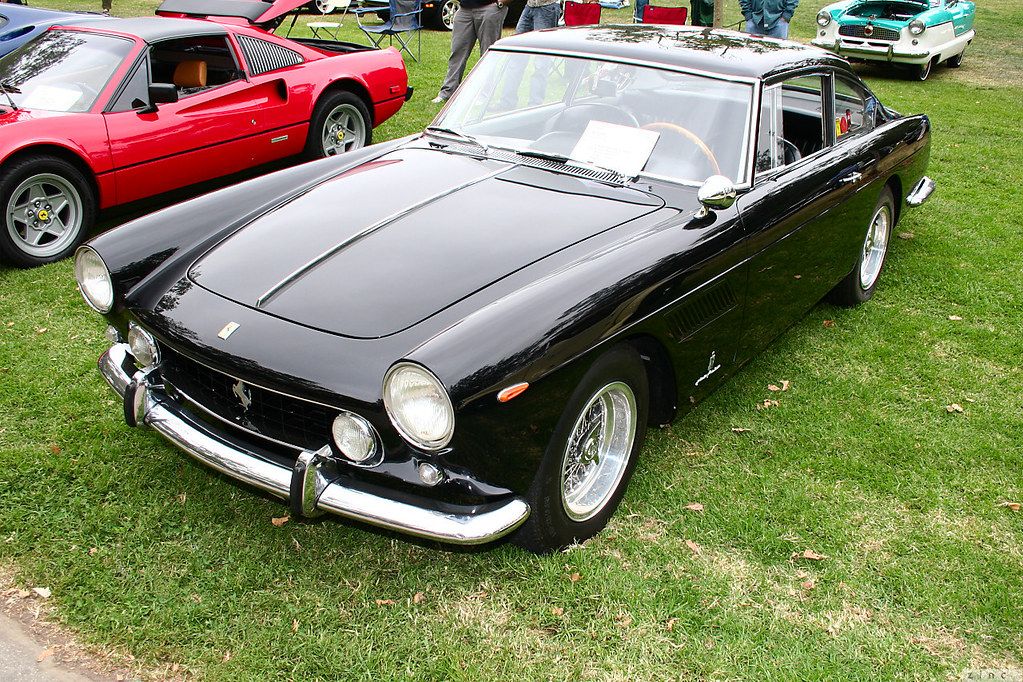
6. **1961 Ferrari 250 GT Spyder California**In John Hughes’ cherished 1986 comedy “Ferris Bueller’s Day Off,” the majestic 1961 Ferrari 250 GT Spyder California convertible transcends being merely a car; it is a profound character itself. It symbolizes Cameron Frye’s distant, demanding father, who, as Cameron famously declares, “loves this car more than life itself.” This exquisite Italian masterpiece becomes the focal point of Ferris and Cameron’s audacious day of escapades across Chicago, a magnificent red jewel against the vibrant backdrop of teenage rebellion. Its inherent elegance, blistering speed, and extreme rarity cement its status as the quintessential “movie star” car.
The authentic 1961 Ferrari 250 GT Spyder California is an automotive myth, a car of such breathtaking design and severely limited production that a mere 56 examples were ever meticulously crafted. This extreme scarcity directly contributes to its astronomical market value, with one commanding a staggering sum exceeding $18 million at auction in 2015. The mere contemplation of such an irreplaceable vehicle being subjected to cinematic stunts, let alone its infamous climactic plummet, would undoubtedly induce severe heart palpitations in any dedicated automotive purist.
Thankfully, for enthusiasts of fine automobiles, the cars that met their dramatic fate in the film were not genuine Ferraris. Instead, ingenious cinematic magic was masterfully employed through the use of remarkably convincing recreations. The majority of the movie’s shots featured three exceptionally faithful replicas, painstakingly crafted by Modena Design. These impressive imitation 250 GTs were powered by robust 289 cubic inch Ford V8s and were so astonishingly accurate in their likeness that Ferrari itself initiated legal action against Modena to cease their production. One of these film-used replicas, a compelling testament to its illusion, recently sold for $313,000, underscoring the enduring allure of this legendary car.
Car Model Information: 2023 Mazda Mazda3 FWD w/Select Package
Name: Ferrari 250 GT , California Spyder
Caption: Ferrari 250 GT California Spyder SWB at the Goodwood Revival 2009.
Manufacturer: Ferrari
Production: 1957–1963,(106 produced)
Assembly: Modena
Designer: Sergio Scaglietti
Class: Sports car
BodyStyle: Roadster (automobile)
Layout: Longitudinal engine,Front-engine, rear-wheel-drive layout#Front mid-engine, rear-wheel-drive layout
Engine: Ferrari Colombo engine
Related: Ferrari 250 GT Berlinetta
Transmission: Manual transmission
Wheelbase: 2600 mm
Abbr: on (dry)
Weight: 1100 kg
Successor: Ferrari Daytona
Categories: 1950s cars, 1960s cars, Articles with short description, CS1 maint: others, Cars introduced in 1957
Summary: The Ferrari 250 GT California Spyder is a sports car developed by the Italian automotive company Ferrari. It is presented by the brand as Ferrari 250 Gran Turismo Spyder California or simply Ferrari 250 California. It was designed by Sergio Scaglietti, who adapted the styling of the 250 GT Pininfarina, and was produced by Carrozzeria Scaglietti. The model gained considerable recognition following its appearance in the 1986 film Ferris Bueller’s Day Off.
The 250 GT California Spyder is a convertible version of the contemporary Berlinetta. It is powered by the traditional Ferrari V12 engine and was produced in approximately 100 units, nearly equally split between long wheel-bases (LWB) versions from 1957 to 1960 and short wheelbase (SWB) versions from 1960 to 1963.
At auction French actor Alain Delon sold for nearly EUR 16.3 million in February 2015 Christies sold a rare variant for USD 25 million at 2025 Monterey Car Week.
Get more information about: Ferrari 250 GT California Spyder
Buying a high-performing used car >>>
Brand: Ferrari Model: 250 GT Spyder California
Price: $17,921 Mileage: 57,854 mi.
Read more about: Beyond the Garage: 12 Legendary Classic Cars Skyrocketing in Value, Defining Automotive Investment Potential

7. **1966 Ford Thunderbird convertible**The 1991 road trip classic “Thelma and Louise” culminates in one of cinema’s most enduringly iconic and defiantly powerful endings, prominently featuring Louise’s 1966 Ford Thunderbird convertible. This striking vehicle gracefully carries the titular characters, portrayed by Susan Sarandon and Geena Davis, to their triumphant, albeit poignant, escape from relentless justice, dramatically plunging off a cliff into the vast expanse of the Grand Canyon. The T-bird, in that unforgettable moment, evolved into an enduring symbol of their unbreakable bond, their desperate flight, and their ultimate liberation, unequivocally cementing its revered place in film history.
The immensely dramatic final scene was meticulously planned and flawlessly executed. It was authentically filmed at Dead Horse Point within Canyonlands National Park, Utah, and notably marked the very last sequence for the entire movie. To achieve the breathtaking visual, producers carefully prepared three separate T-bird coupes for the demanding stunt. These cars underwent extensive modification, with roofs expertly removed and frames significantly reinforced to endure the severe impact of the cinematic plunge.
The filming process had considerable challenges; the initial attempt to capture the plunge proved a dud. However, the subsequent second attempt flawlessly yielded the epic, breathtaking shot that has since captivated audiences worldwide. Remarkably, the third prepared car was spared and continues to exist today, a silent witness to a pivotal moment in film.
Furthermore, the intact “hero car,” utilized for earlier, less destructive scenes, famously appeared at auction in 2008, selling for a substantial $71,500. This impressive price, notably more than twice its Hagerty-cited value, reflected not only the car’s inherent classic appeal but also the immense allure of owning a tangible piece of “Thelma and Louise” history, complete with cherished memorabilia and authentic autographs. It powerfully stands as a poignant reminder of a story that continues to resonate deeply, forever carried forward by a car that definitively became a legend.
Now, as we shift gears and leave the silver screen behind, our journey continues into the heart of the ’60s and ’70s, a golden age where convertibles transcended mere transportation to become pure automotive poetry. These next seven machines, while perhaps not household names for their movie roles, are undeniable icons in their own right. They represent the pinnacle of design elegance, raw power, and an unyielding appeal that continues to captivate enthusiasts and collectors today. Prepare to be swept away by the enduring magic of these quintessential drop-tops!
Car Model Information: 2003 Ford Thunderbird Premium
Name: Ford Thunderbird
Caption: 1957 Thunderbird
Manufacturer: Ford Motor Company
Production: unbulleted list
ModelYears: unbulleted list
Class: unbulleted list
Layout: Front-engine, rear-wheel drive layout
Categories: 1960s cars, 1970s cars, 1980s cars, 1990s cars, 2000s cars
Summary: The Ford Thunderbird is a personal luxury car manufactured and marketed by Ford Motor Company for model years 1955 to 2005, with a hiatus from 1998 to 2001.
Ultimately gaining a broadly used colloquial nickname, the T-Bird, the model was introduced as a two-seat convertible, subsequently offered variously in a host of body styles including as a four-seat hardtop coupe, four-seat convertible, five-seat convertible and hardtop, four-door pillared hardtop sedan, six-passenger hardtop coupe, and five-passenger pillared coupe, before returning in its final generation, again as a two-seat convertible.
At its inception, Ford targeted the two-seat Thunderbird as an upscale model. The 1958 model year design introduced a rear seat and arguably marked the expansion of a market segment that came to be known as personal luxury cars, positioned to emphasize comfort and convenience over handling and high-speed performance.
Get more information about: Ford Thunderbird
Buying a high-performing used car >>>
Brand: Ford Model: Thunderbird
Price: $14,500 Mileage: 49,430 mi.
Read more about: 12 Iconic Boomer Cars Millennials Can’t Stand: The Generational Divide on Wheels
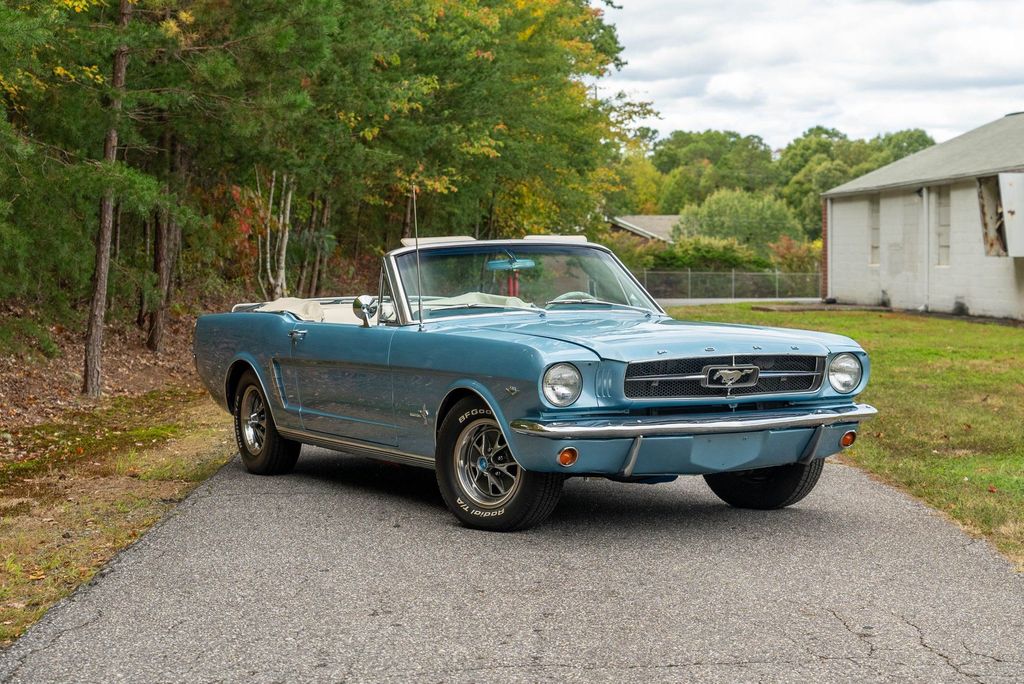
8. **1965 Ford Mustang Convertible**The Mustang didn’t just burst onto the scene in 1964; it exploded, redefining what an affordable, sporty car could be. By 1965, the convertible variant had swiftly become a firm crowd favorite, embodying the ultimate expression of American freedom and fun on four wheels. Its introduction truly sparked the legendary pony car craze, forcing rivals to frantically scramble to catch up. This wasn’t just a car; it was a phenomenon, a vibrant symbol of a new generation’s aspirations.
Ford built an astonishing 101,945 Mustang convertibles that year, a significant portion of the total 559,451 Mustangs produced, showcasing its immense popularity. Underneath that sleek hood, power came from various options, with the potent 289-cubic-inch V-8 churning out an impressive 271 horsepower when properly equipped. Mated to a four-speed manual or a smooth three-speed automatic, this open-top beauty could hit a top speed of around 120 mph and sprint from 0 to 60 mph in a thrilling 7 seconds.
What was the secret to its undeniable click? It was a masterful combination of factors: the Mustang was wonderfully affordable, incredibly cool, and endlessly customizable, allowing every driver to truly make it their own. From the milder six-cylinders to the wild, roaring V-8s, there was a Mustang to perfectly fit every desire and driving style. Its distinctive long hood and short deck styling simply screamed American swagger.
The Mustang convertible became an instant classic, an automotive icon that perfectly captured the spirit of the era. To this day, owning a ’65 Mustang convertible means owning a piece of that effervescent history, a tangible connection to a time when driving was truly about joy, style, and the sheer thrill of the open road. It’s a car that still beckons you to just get in and drive.
Car Model Information: 2024 Ford Mustang GT
Name: Ford Mustang
Caption: 2024 Ford Mustang GT Convertible
Aka: Ford T5 (Germany)
Manufacturer: Ford Motor Company
Production: March 1964 – present
ModelYears: 1965–present
Class: Unbulleted list
BodyStyle: Unbulleted list
Layout: Front-engine, rear-wheel-drive layout
Categories: 1970s cars, 1980s cars, 1990s cars, 2+2 coupés, 2000s cars
Summary: The Ford Mustang is an American automobile manufactured and marketed by Ford since 1964, as Ford’s longest nameplate in continuous production. Currently in its seventh generation, it is the fifth-best selling Ford car nameplate. The namesake of the “pony car” automobile segment, the Mustang was developed as a highly styled line of sporty coupes and convertibles derived from existing model lines, initially distinguished by its pronounced “long hood, short deck” proportions.
Originally predicted to sell 100,000 vehicles yearly, the 1965 Mustang became the most successful vehicle launch since the 1927 Model A. Introduced on April 17, 1964 (16 days after the Plymouth Barracuda), over 400,000 units were sold in its first year; the one-millionth Mustang was sold within two years of its launch. In August 2018, Ford produced the 10-millionth Mustang; matching the first 1965 Mustang, the vehicle was a 2019 Wimbledon White convertible with a V8 engine.
The success of the Mustang launch led to multiple competitors from other American manufacturers, including the Chevrolet Camaro and Pontiac Firebird (1967), AMC Javelin (1968), and Dodge Challenger (1970). It also competed with the Plymouth Barracuda, which was launched around the same time. The Mustang also had an effect on designs of coupes worldwide, leading to the marketing of the Toyota Celica and Ford Capri in the United States (the latter, by Lincoln-Mercury). The Mercury Cougar was launched in 1967 as a unique-bodied higher-trim alternative to the Mustang; during the 1970s, it included more features and was marketed as a personal luxury car.
From 1965 until 2004, the Mustang shared chassis commonality with other Ford model lines, staying rear-wheel-drive throughout its production. From 1965 to 1973, the Mustang was derived from the 1960 Ford Falcon compact. From 1974 until 1978, the Mustang (denoted Mustang II) was a longer-wheelbase version of the Ford Pinto. From 1979 until 2004, the Mustang shared its Fox platform chassis with 14 other Ford vehicles (becoming the final one to use the Fox architecture). Since 2005, Ford has produced two generations of the Mustang, each using a distinct platform unique to the model line.
Through its production, multiple nameplates have been associated with the Ford Mustang series, including GT, Mach 1, Boss 302/429, Cobra (separate from Shelby Cobra), and Bullitt, along with “5.0” fender badging (denoting 4.9 L OHV or 5.0 L DOHC V8 engines).
Get more information about: Ford Mustang
Buying a high-performing used car >>>
Brand: Ford Model: Mustang
Price: $38,965 Mileage: 13,465 mi.
Read more about: Is Your Ride a ‘Menace’? Unpacking the 12 Cars That Scream ‘Terrible Driver Vibes’ on the Road!
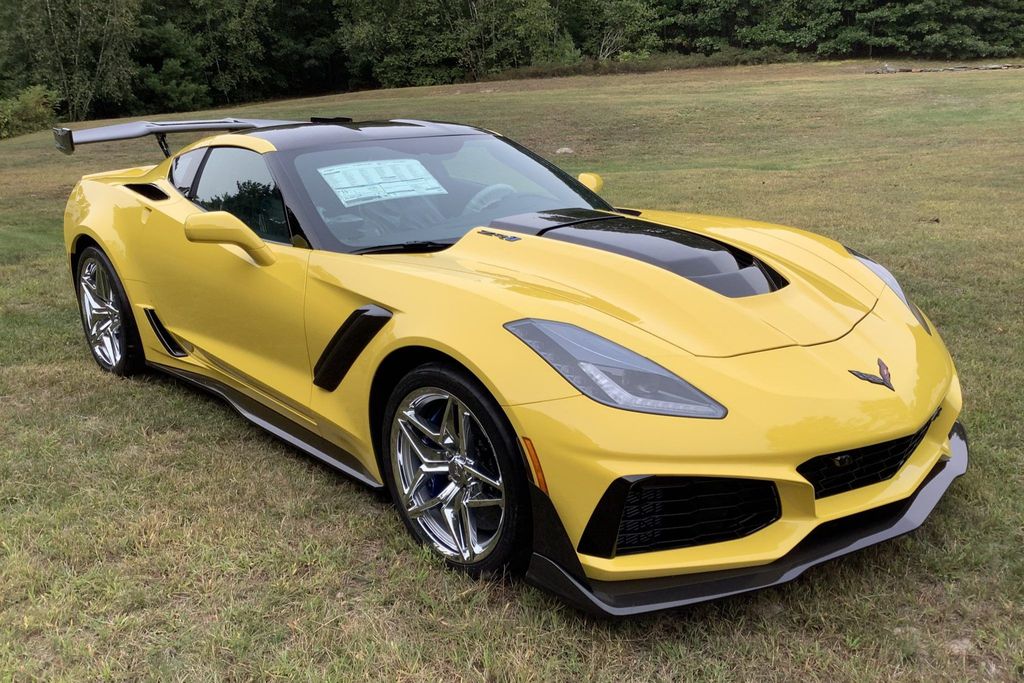
9. **1968 Chevrolet Corvette Convertible**With a growl and a dramatic flair, the C3 Corvette roared onto the scene in 1968, and its convertible sibling was, quite simply, pure automotive drama personified. This wasn’t just a car; it was a low-slung, shark-like sculpture on wheels, designed to turn heads and ignite passions with every curve and every hidden detail. It truly epitomized the raw power and undeniable sex appeal that defined American sports cars of the late ’60s.
Chevrolet built a respectable 18,630 drop-tops out of a total of 28,566 Corvettes that year, making it a highly desirable choice for those seeking the ultimate open-air performance experience. The base 327-cubic-inch V-8 delivered a healthy 300 horsepower, but for the truly insatiable, the monstrous 427-cubic-inch option pumped out an exhilarating 435 horsepower. Paired with a standard four-speed manual or an available three-speed automatic, this beast could rocket from 0 to 60 mph in under 6 seconds and achieve a blistering top speed of 140 mph.
Its striking shark-like curves and aggressive stance ensured that it turned heads everywhere it went, while the cleverly hidden headlights added an extra layer of mystique and sophistication. The C3’s relatively high production numbers also had a practical benefit for enthusiasts: parts were (and largely remain) easy to find, keeping it a perennial favorite for weekend wrenchers and dedicated restorers who love to get their hands dirty.
The Corvette convertible’s enduring value is a testament to its timeless design and exhilarating performance. Hagerty, the esteemed authority on classic car values, pegs a 1971 model at a robust $23,700, showcasing its lasting appeal and desirability among collectors. This isn’t just a car; it’s a statement, a thrilling piece of automotive history that promises an unforgettable ride every time the top comes down.
Car Model Information: 2004 Chevrolet Corvette Base
Name: Chevrolet Corvette
Caption: 2021 Chevrolet Corvette C8
Manufacturer: Chevrolet
Production: 1953–present
ModelYears: bulleted list
Assembly: bulleted list
Class: Sports car
BodyStyle: coupé
Layout: Front-engine, rear-wheel-drive layout,Rear mid-engine, rear-wheel-drive layout
Categories: 1950s cars, 1960s cars, 1970s cars, 1980s cars, 1990s cars
Summary: The Chevrolet Corvette is a line of American two-door, two-seater sports cars manufactured and marketed by General Motors under the Chevrolet marque since 1953. Throughout eight generations, indicated sequentially as C1 to C8, the Corvette is noted for its performance, distinctive styling, lightweight fiberglass or composite bodywork, and competitive pricing. The Corvette has had domestic mass-produced two-seater competitors fielded by American Motors, Ford, and Chrysler; it is the only one continuously produced by a United States auto manufacturer. It serves as Chevrolet’s halo car.
In 1953, GM executives accepted a suggestion by Myron Scott, then the assistant director of the Public Relations department, to name the company’s new sports car after the corvette, a small, maneuverable warship. Initially, a relatively modest, lightweight 6‑cylinder convertible, subsequent introductions of V8 engines, competitive chassis innovations, and rear mid-engined layout have gradually moved the Corvette upmarket into the supercar class. In 1963, the second generation was introduced in coupe and convertible styles. The first three Corvette generations (1953–1982) employed body-on-frame construction, and since the C4 generation, introduced in 1983 as an early 1984 model, Corvettes have used GM’s unibody Y‑body platform. All Corvettes used front mid-engine configuration for seven generations, through 2019, and transitioned to a rear mid-engined layout with the C8 generation.
Initially manufactured in Flint, Michigan, and St. Louis, Missouri, the Corvette has been produced in Bowling Green, Kentucky, since 1981, which is also the location of the National Corvette Museum. The Corvette has become widely known as “America’s Sports Car.” Automotive News wrote that after being featured in the early 1960s television show Route 66, “the Corvette became synonymous with freedom and adventure,” ultimately becoming both “the most successful concept car in history and the most popular sports car in history.”
Get more information about: Chevrolet Corvette
Buying a high-performing used car >>>
Brand: Chevrolet Model: Corvette
Price: $23,629 Mileage: 29,579 mi.
Read more about: 14 Classic Rides That Boomers Loved But Millennials and Gen Z Just Can’t Stand: Unpacking Why These Iconic Cars Fail to Appeal Now
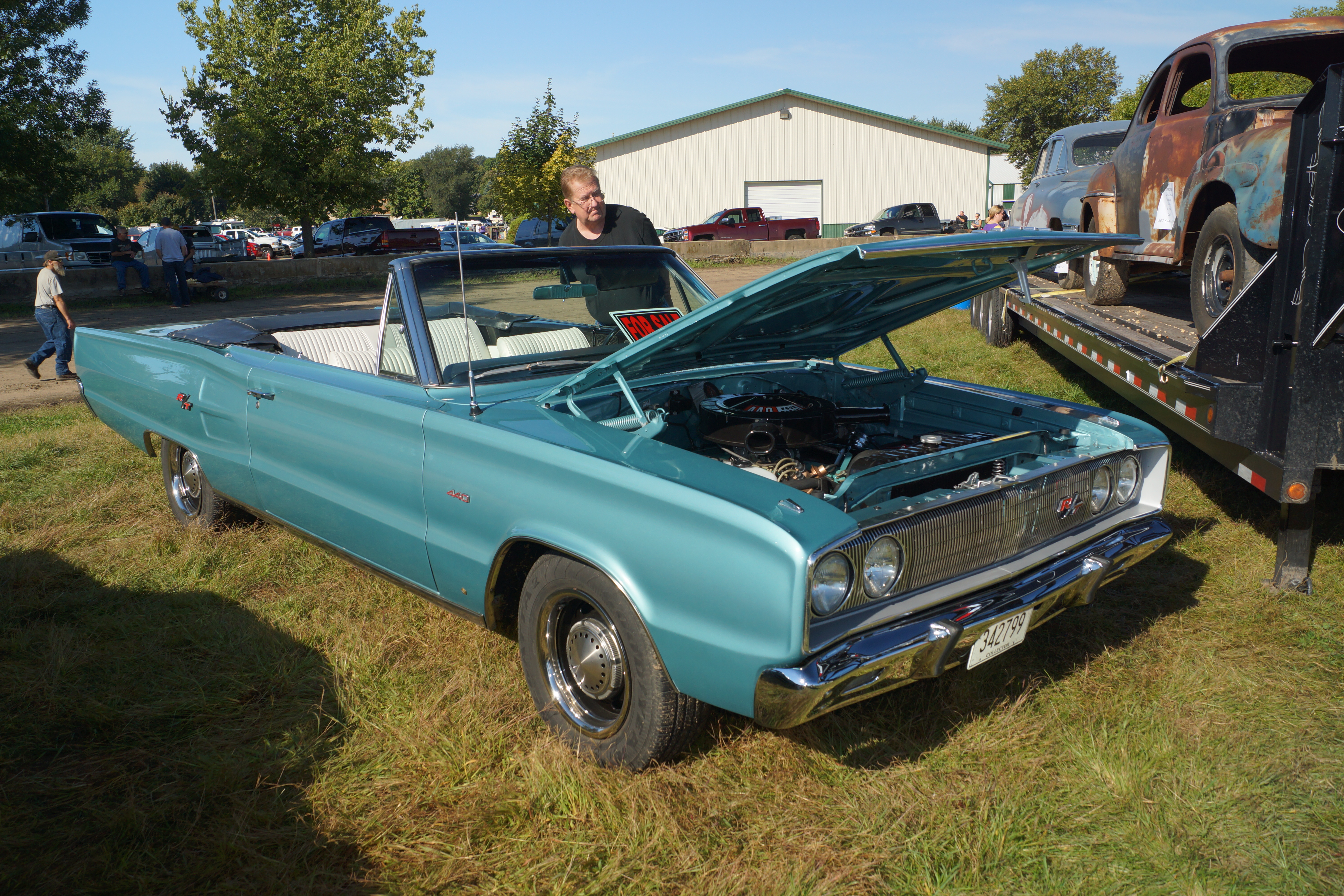
10. **1967 Dodge Coronet R/T Convertible**For those who craved raw, unfiltered muscle with a side of open-air exhilaration, the 1967 Dodge Coronet R/T convertible was a truly rare beast, an apex predator of the asphalt. This was Mopar muscle at its absolute peak, a machine built for speed, sound, and an undeniable presence that commanded respect on any street or strip. Its very existence was a defiant roar against conformity.
Its rarity is legendary, with only a minuscule 627 R/T convertibles built out of 10,181 total R/T models. This scarcity makes it an incredibly sought-after prize today. Power flowed from an immense 440-cubic-inch V-8, cranking out a pavement-pounding 375 horsepower, a figure that truly meant business. This formidable engine was backed by either a robust TorqueFlite automatic transmission or a precise four-speed manual, propelling the car to 60 mph in a blistering 6 seconds and achieving a top speed near 130 mph. Heavy-duty shocks and brakes ensured it stayed planted, even when unleashing its full fury.
The Coronet R/T’s aggressive aesthetic was perfectly matched by its performance. Its functional hood scoop and clean, purposeful lines gave it an unmistakable menacing appeal, a clear signal of the potent power lurking beneath. Yet, convertibles remained a relatively niche market in the muscle car segment, a fact that contributes directly to their extreme scarcity and immense value today.
Originally priced at a respectable $3,438 new, these incredible machines have since ascended to the realm of collector gold, routinely fetching six-figure sums at auction. Owning a 1967 Coronet R/T convertible isn’t just about owning a car; it’s about possessing a tangible piece of unadulterated American muscle car history, a rare icon that continues to thrill with every blip of the throttle.
Car Model Information: 2025 RAM 1500 Laramie
Name: Dodge Coronet
Caption: 1967 Dodge Coronet R/T
Manufacturer: Dodge
Production: 1949–1959,1965–1976
Class: Full-size
Predecessor: Dodge Custom
Successor: Dodge Dart
Layout: FR layout
Categories: 1950s cars, 1970s cars, All articles with dead external links, All articles with unsourced statements, Articles with dead external links from June 2016
Summary: The Dodge Coronet is an automobile that was marketed by Dodge in seven generations, and shared nameplates with the same bodyshell with varying levels of equipment installed. Introduced as a full-size car in 1949, it was the division’s highest trim line and moved to the lowest level starting in 1955 through 1959. The name was reintroduced on intermediate-sized models from the 1965 until 1976 model years. Muscle car versions were available starting in 1965 with the 383 and 426 wedge cu in (7.0 L) Chrysler RB engine, followed in 1966 by the powerful 426 cu in (7.0 L) Chrysler Hemi. Other performance models included the “Superbee”, and featured, the 383 cu in (6.3 L) Magnum, among other engine options. The nameplate “coronet” is a type of crown worn by royalty.
In the 1980s, the Coronet was used on Dodge models marketed in Colombia.
Get more information about: Dodge Coronet
Buying a high-performing used car >>>
Brand: Dodge Model: Coronet R/T
Price: $46,355 Mileage: 38,059 mi.
Read more about: 14 Classic Rides That Boomers Loved But Millennials and Gen Z Just Can’t Stand: Unpacking Why These Iconic Cars Fail to Appeal Now

11. **1969 Pontiac Firebird Convertible**Pontiac’s 1969 Firebird convertible emerged as a sophisticated, more flamboyant cousin to the Chevrolet Camaro, carving out its own distinct niche with an extra dash of flair and an unmistakable personality. This was a car that didn’t just follow; it led with an assertive, bold grille and a dynamic presence that announced its arrival long before you even heard its engine sing. It was about style, performance, and a rebellious spirit, all wrapped up in a beautiful open-top package.
In 1969, a modest 11,649 Firebird convertibles were crafted out of a total of 87,708 Firebirds, highlighting its exclusivity and desirability among enthusiasts. The top engine choice, a potent 400-cubic-inch V-8, pushed a thrilling 345 horsepower through either a precise four-speed manual or a smooth three-speed automatic transmission. This combination allowed the Firebird to sprint to 60 mph in a brisk 6.5 seconds and achieve a spirited top end of 125 mph, offering a truly engaging driving experience.
The Firebird’s unique identity was unmistakable, defined by its bold grille and iconic split nose, which immediately set it apart from its F-body platform sibling. Despite sharing underlying architecture with the Camaro, the Firebird always managed to feel distinct, embodying Pontiac’s commitment to stylish performance and a more luxurious, driver-centric experience. It had a certain intangible quality that made it feel special.
Today, the convertible’s relative rarity adds a significant layer of cachet, making it a highly sought-after collectible. Prices for well-maintained examples often hover around the $30,000 mark, a clear reflection of the strong and enduring demand for Pontiac’s stylish and powerful pony car. It remains a beloved classic, offering a blend of open-air freedom, muscle car performance, and undeniable character.
Car Model Information: 1983 Pontiac Firebird Trans Am 2D Coupe
Name: Pontiac Firebird
Caption: The second, third, and fourth generations of,the Pontiac Firebird Trans Am
Manufacturer: Pontiac (automobile)
Production: February 23, 1967 – August 30, 2002
ModelYears: 1967 – 2002
Class: Pony car,Muscle car
Platform: GM F platform
Related: Chevrolet Camaro
Layout: Front engine, rear-wheel-drive layout
Categories: 1970s cars, 1980s cars, 1990s cars, 2000s cars, All articles with dead external links
Summary: The Pontiac Firebird is an American automobile built and produced by Pontiac from the 1967 to 2002 model years. Designed as a pony car to compete with the Ford Mustang, it was introduced on February 23, 1967, five months after GM’s Chevrolet division’s platform-sharing Camaro. This also coincided with the release of the 1967 Mercury Cougar, Ford’s upscale, platform-sharing version of the Mustang.
The name “Firebird” was also previously used by GM for the General Motors Firebird series of concept cars in the 1950s.
Get more information about: Pontiac Firebird
Buying a high-performing used car >>>
Brand: Pontiac Model: Firebird
Price: $22,991 Mileage: 38,257 mi.
Read more about: Is Your Ride a ‘Menace’? Unpacking the 12 Cars That Scream ‘Terrible Driver Vibes’ on the Road!

12. **1961 Jaguar E-Type Roadster**When the Jaguar E-Type roadster was unveiled in 1961, it didn’t just impress; it absolutely stunned the automotive world, instantly becoming an icon of breathtaking design and engineering prowess. Enzo Ferrari himself, a man notoriously stingy with praise, famously called it “the most beautiful car ever made.” This wasn’t merely a vehicle; it was a rolling work of art, a symphony of curves and power that effortlessly blended elegance with exhilarating performance.
Approximately 7,828 Series 1 convertibles were meticulously built through 1967, each one a testament to Jaguar’s commitment to luxury and speed. Beneath its impossibly long bonnet resided a glorious 3.8-liter inline-six engine, producing a robust 265 horsepower, paired with a precise four-speed manual transmission. This combination enabled the E-Type to zip to 60 mph in a remarkable 7 seconds and achieve a thrilling top speed of 150 mph. Crucially, its four-wheel disc brakes and independent suspension system provided racecar-like handling, ensuring it was as capable as it was beautiful.
The E-Type’s design was pure poetry in motion, characterized by that iconic long hood, curvaceous body, and a silhouette that remains instantly recognizable and revered. But beyond its stunning aesthetics, the car was also a technological marvel for its time, featuring advanced elements like monocoque construction and precise rack-and-pinion steering. It truly pushed the boundaries of automotive engineering, setting new standards for sports car design and performance.
Today, the E-Type Roadster’s timeless allure has only deepened with age. Restored examples now command impressive sums, often exceeding $150,000 or more, a clear and undeniable nod to its enduring status as a definitive automotive masterpiece. To drive an E-Type is to experience a piece of history, an exquisite blend of luxury, performance, and unparalleled beauty that truly makes you feel like a star.
Car Model Information: 1971 Jaguar E-Type Restomod
Sp: uk
Name: Jaguar E-Type
Caption: 1961 E-Type Series 1 3.8-Litre, the first production model of this open two-seater
Aka: Jaguar XK-E , Jaguar V-12
Manufacturer: Jaguar Cars
Production: 1961–1974
Class: Sports car
Predecessor: Jaguar XK150
Related: Jaguar D-Type,Jaguar XJ13
Successor: Jaguar XJS
Layout: FMR layout
Assembly: Coventry,England
Designer: Malcolm Sayer
Categories: 1970s cars, 2+2 coupés, All articles with dead external links, All articles with specifically marked weasel-worded phrases, All articles with unsourced statements
Summary: The Jaguar E-Type, or the Jaguar XK-E for the North American market, is a British front mid-engined sports car that was manufactured by Jaguar Cars Ltd from 1961 to 1974. Its sleek appearance, advanced technologies, high performance, and competitive pricing established it as an icon. The E-Type’s claimed 150 miles per hour (240 km/h) top speed, sub-7-second 0 to 60 mph (97 km/h) acceleration, largely unitary body construction, front and rear independent suspension with disc brakes, mounted inboard at the rear, and rack-and-pinion steering spurred industry-wide changes.
The E-Type was based on Jaguar’s D-Type racing car, which had won the 24 Hours of Le Mans for three consecutive years beginning in 1955.
The E-Type employed what was, for the early 1960s, a novel design principle, with a front subframe carrying the engine, front suspension and front bodywork bolted directly to the body tub. No ladder frame chassis, as was common at the time, was needed and as such the first cars weighed only 1,315 kg (2,899 lb).
It is rumored that, on its debut on 15 March 1961, Enzo Ferrari called it “the most beautiful car ever made”, but this statement is not fully confirmed. In 2004, Sports Car International magazine placed the E-Type at number one on their list of Top Sports Cars of the 1960s. In March 2008, the Jaguar E-Type ranked first in The Daily Telegraph’s online list of the world’s “100 most beautiful cars” of all time.
Get more information about: Jaguar E-Type
Buying a high-performing used car >>>
Brand: Jaguar Model: E-Type
Price: $64,900 Mileage: 2,455 mi.
Read more about: From Humble Beginnings to Electric Dreams: A Deep Dive into Elon Musk’s Electrifying and Eclectic Garage
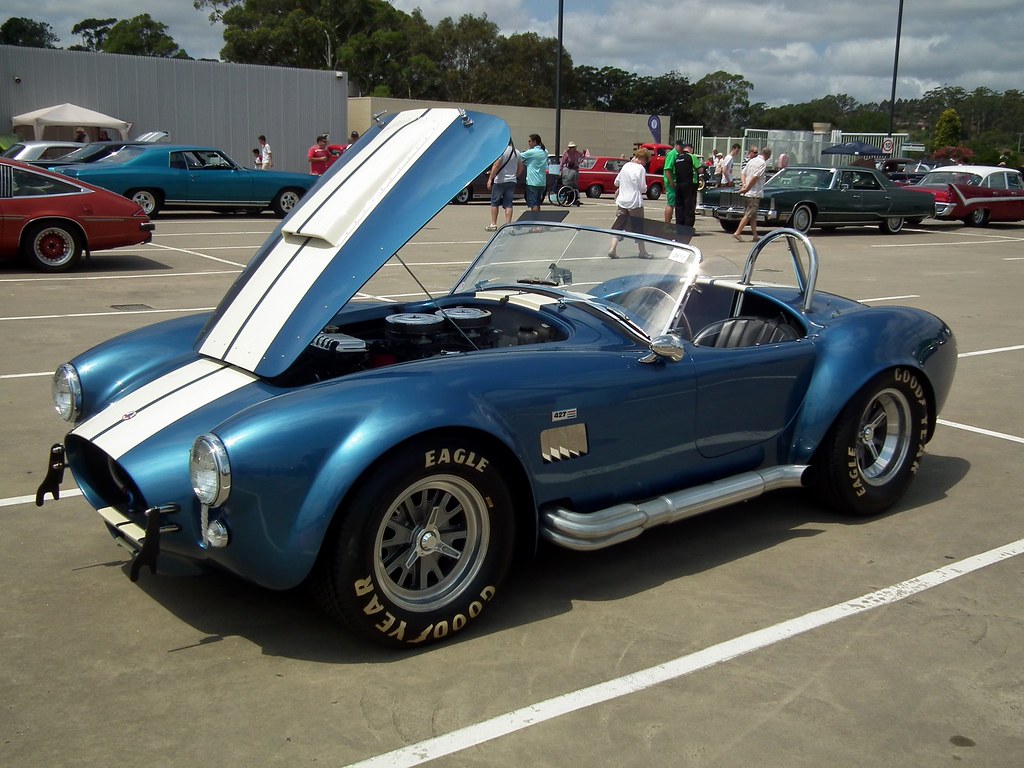
13. **1965 Shelby Cobra 427**The 1965 Shelby Cobra 427 convertible wasn’t just a car; it was a snarling, untamed brute, a testament to Carroll Shelby’s audacious vision and a machine that embodied raw, unfiltered power. This was the result of a legendary recipe: cramming a colossal Ford V-8 engine into a lightweight British AC Ace chassis, then amplifying everything to eleven. It created a legend, a visceral driving experience that few other cars could ever hope to match.
Only 343 examples of this fire-breathing beast were built between 1965 and 1967, cementing its status as an extremely rare and desirable collectible. At its heart was a monumental 427-cubic-inch V-8 engine, unleashing an earth-shattering 425 horsepower (though many whisper that figure was significantly understated). Tied to a rugged four-speed manual transmission, and weighing a mere 2,500 pounds, it rocketed to 60 mph in a jaw-dropping 4.2 seconds and could top out at an incredible 165 mph. Its independent suspension kept it surprisingly glued to the road, considering its wild nature.
Carroll Shelby’s simple yet brilliant V-8-in-a-lightweight-body formula wasn’t just about speed; it was about creating a driving sensation that was pure and unadulterated. Every shift, every roar of the engine, every twist of the wheel was an intimate, thrilling conversation between man and machine. This car demanded respect and rewarded courage, offering an experience that was both terrifying and utterly addictive.
With a total production of only 998 Cobras ever made across all variants, these machines are incredibly scarce, making them the automotive equivalent of a holy grail for collectors. Auction prices for genuine 427 Cobras consistently soar past the $1 million mark, a testament to their legendary status, iconic design, and the exhilarating, raw thrill they continue to deliver even today.
Car Model Information: 2023 Mazda Mazda3 FWD w/Select Package
Caption: AC Cobra 427
Layout: front-engine, rear-wheel drive layout
Manufacturer: AC Cars,Shelby American
Production: 1965–1967
Name: MkIII
Aka: AC Shelby Cobra , Shelby AC Cobra
BodyStyle: Roadster (automobile)
Assembly: Thames Ditton,Surrey,England
Predecessor: AC Ace
Class: Sports car
Successor: AC MK IV
Related: AC Frua,Shelby Daytona
Engine: convert,V8 engine
Wheelbase: 90 in
Abbr: on
Order: flip
Length: 156 in
Width: 68 in
Height: 48 in
Weight: 2355 lb
Categories: 1960s cars, AC vehicles, All articles with unsourced statements, Articles with short description, Articles with unsourced statements from December 2014
Summary: The AC Cobra, sold in the United States as the Shelby Cobra and AC Shelby Cobra, is a sports car manufactured by British company AC Cars, with a Ford V8 engine. It was produced intermittently in both the United Kingdom and later the United States since 1962.
Get more information about: AC Cobra
Buying a high-performing used car >>>
Brand: Shelby Model: Cobra 427
Price: $17,921 Mileage: 57,854 mi.
Read more about: Behind Closed Doors: Unveiling Dwayne ‘The Rock’ Johnson’s Multi-Million Dollar Muscle & Supercar Collection
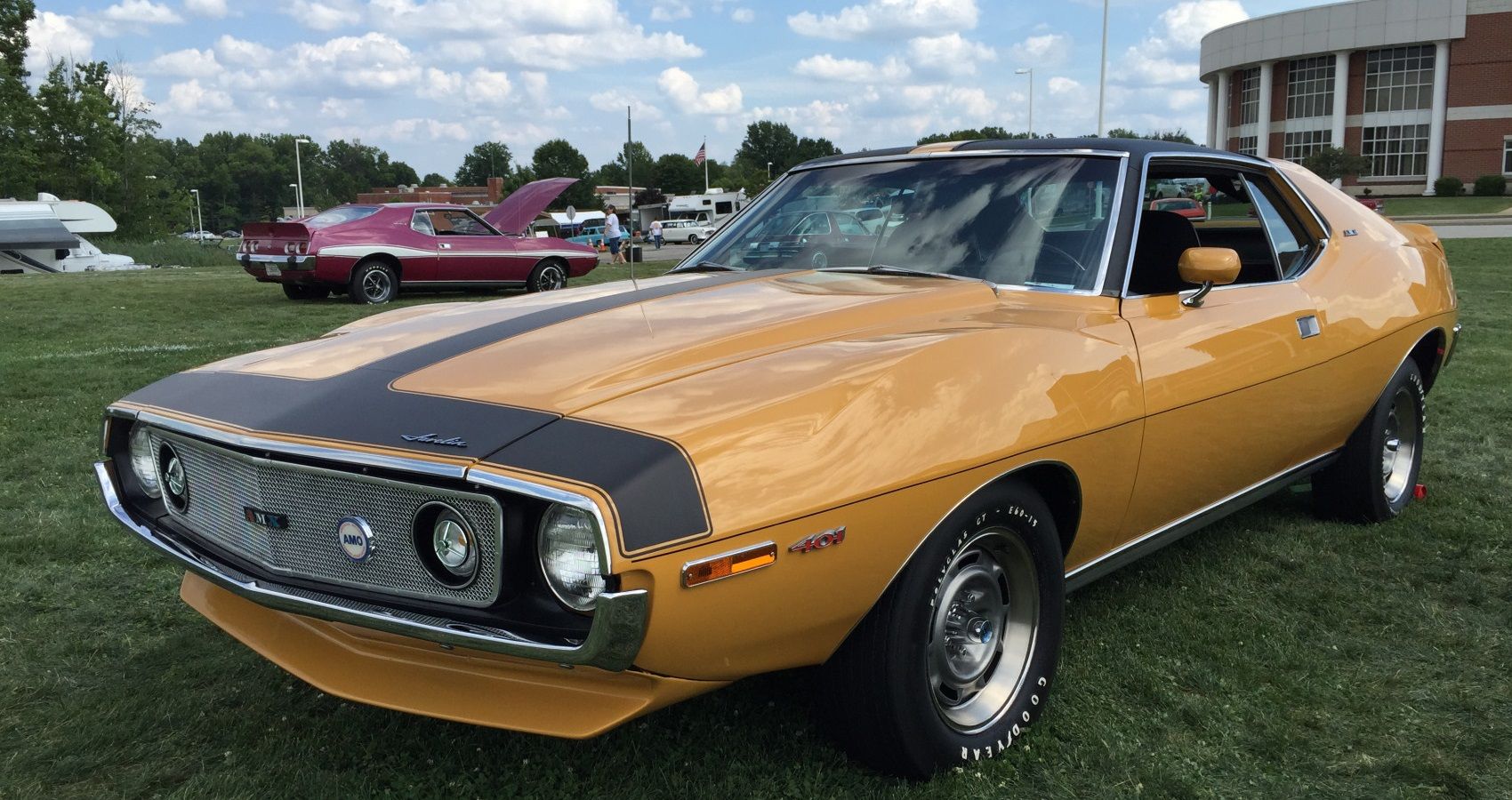
14. **1971 Ferrari 365/4 GTS ‘Daytona’ Spider**It’s truly a testament to its immense presence that the 1971 Ferrari ‘Daytona’ Spider is almost universally known by its unforgettable nickname, rather than its official designation of 365/4 GTS. This magnificent machine stands as one of the most sought-after vintage convertibles, revered for its absolutely stunning Colombo V12 engine and a styling aesthetic that was undeniably decades ahead of its time, pushing the boundaries of automotive design.
The Daytona marked a pivotal shift for Ferrari, moving decisively on from the more classic, curvaceous lines that had defined its earlier convertibles, such as the beloved 250 California. Instead, the Daytona introduced a bolder, more angular, and strikingly modern style, conceived by the visionary Leonardo Fioravanti at Pininfarina. Its sharp creases, long hood, and Kamm tail were a dramatic departure, signaling a new era of aggressive elegance for the Prancing Horse.
This open-top masterpiece wasn’t just about looks; it was a true grand tourer, capable of incredible speeds and long-distance comfort. The legendary 4.4-liter V12 engine, placed up front, delivered a symphony of power and sound, making every drive an event. It was designed to conquer continents in style and speed, embodying the very essence of Italian automotive passion and engineering excellence.
The Daytona Spider is more than just a car; it’s a statement, a piece of automotive art that embodies a crucial moment in Ferrari’s design evolution. Its scarcity, combined with its iconic styling and the sheer potency of its V12, ensures its place as a revered classic and a dream car for enthusiasts worldwide.
Car Model Information: 2023 Mazda Mazda3 FWD w/Select Package
Categories: All articles needing additional references, Articles needing additional references from April 2023, Articles with short description, Ferrari, Lists of cars
Summary: The following is a list of road cars manufactured by Italian sports car manufacturer Ferrari, dating back to the 1950s (Race cars from the late 1940s).
Get more information about: List of Ferrari road cars
Buying a high-performing used car >>>
Brand: Ferrari Model: Daytona Spider
Price: $17,921 Mileage: 57,854 mi.
Read more about: 20 Open-Air Icons: The Greatest Vintage Convertibles
And there you have it, fellow enthusiasts! From the dazzling allure of Hollywood’s silver screen to the pure, unadulterated thrill of the open road, the convertibles of the 1960s and 1970s truly defined an era of freedom, style, and engineering brilliance. Whether they were ferrying movie stars through dramatic scenes or simply cruising down a sun-drenched highway, these drop-tops possessed an undeniable magic. They weren’t just cars; they were extensions of our dreams, providing a tangible connection to a time when driving was an adventure, a statement, and a pure, joyous celebration of life. So, as the engines cool and the tops go up, let’s cherish the memories these automotive legends have created, and perhaps, inspire new ones behind the wheel of our own rolling works of art. The spirit of the convertible lives on, forever beckoning us to feel the wind in our hair and the thrill of the open road.


